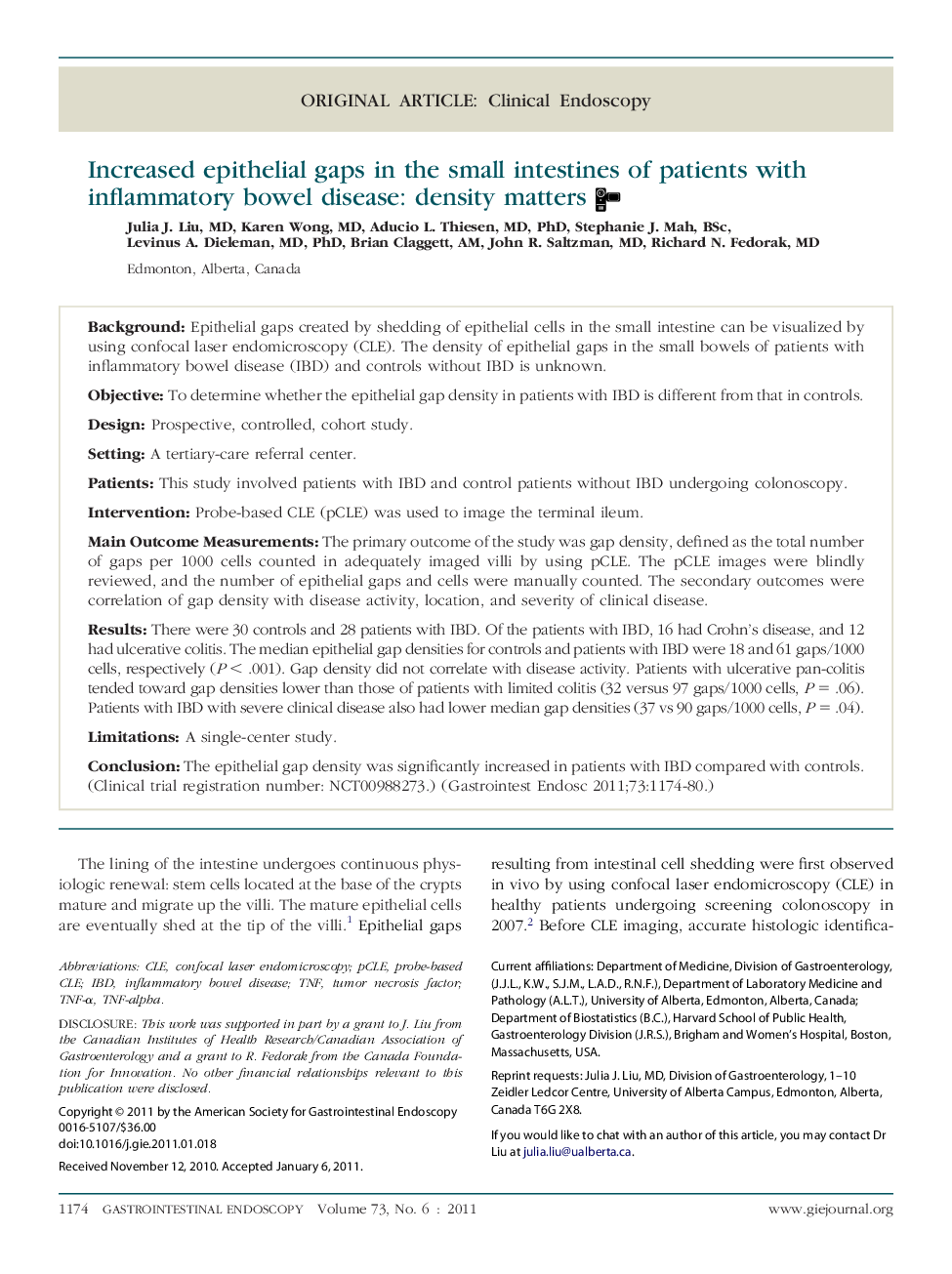| کد مقاله | کد نشریه | سال انتشار | مقاله انگلیسی | نسخه تمام متن |
|---|---|---|---|---|
| 3303839 | 1210323 | 2011 | 7 صفحه PDF | دانلود رایگان |

BackgroundEpithelial gaps created by shedding of epithelial cells in the small intestine can be visualized by using confocal laser endomicroscopy (CLE). The density of epithelial gaps in the small bowels of patients with inflammatory bowel disease (IBD) and controls without IBD is unknown.ObjectiveTo determine whether the epithelial gap density in patients with IBD is different from that in controls.DesignProspective, controlled, cohort study.SettingA tertiary-care referral center.PatientsThis study involved patients with IBD and control patients without IBD undergoing colonoscopy.InterventionProbe-based CLE (pCLE) was used to image the terminal ileum.Main Outcome MeasurementsThe primary outcome of the study was gap density, defined as the total number of gaps per 1000 cells counted in adequately imaged villi by using pCLE. The pCLE images were blindly reviewed, and the number of epithelial gaps and cells were manually counted. The secondary outcomes were correlation of gap density with disease activity, location, and severity of clinical disease.ResultsThere were 30 controls and 28 patients with IBD. Of the patients with IBD, 16 had Crohn's disease, and 12 had ulcerative colitis. The median epithelial gap densities for controls and patients with IBD were 18 and 61 gaps/1000 cells, respectively (P < .001). Gap density did not correlate with disease activity. Patients with ulcerative pan-colitis tended toward gap densities lower than those of patients with limited colitis (32 versus 97 gaps/1000 cells, P = .06). Patients with IBD with severe clinical disease also had lower median gap densities (37 vs 90 gaps/1000 cells, P = .04).LimitationsA single-center study.ConclusionThe epithelial gap density was significantly increased in patients with IBD compared with controls. (Clinical trial registration number: NCT00988273.)
Journal: Gastrointestinal Endoscopy - Volume 73, Issue 6, June 2011, Pages 1174–1180